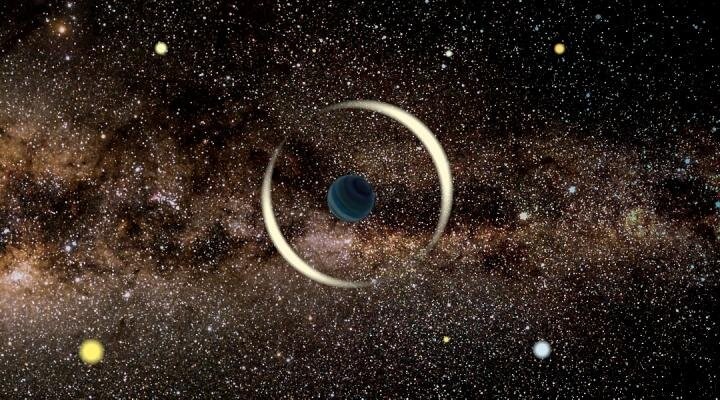A team of astronomers announces that they have detected a wandering planet of Earth size, even Mars size. This is the first time that such a solitary world has been discovered.
To date, we have discovered more than 4,000 exoplanets. There is everything:large, small, rocky, gaseous, very hot worlds and conversely, very cold objects. That said, all these planets (or almost) have at least one thing in common:they revolve around a star.
However, there are other, more lonely worlds in the Universe that are not bound to any star . They are called "wandering planets".
A few years ago, Polish astronomers, from the University of Warsaw, indeed provided the first evidence of the existence of such objects in our galaxy. As a rule, these objects are quite massive. The same team announces today the detection of a new wandering world, this time Earth-sized . This is a first, the details of which are published in The Astrophysical Journal Letters .
To unearth an exoplanet, astronomers generally rely on two methods. The first, that of the radial velocity, makes it possible to detect the gravitational effect of the planet on its star. The second, that of the transit, makes it possible to identify tiny drops in luminosity of a star, betraying the passage of a planet in our visual field. These two methods, as you will have understood, imply on the other hand the presence of a star.
Wandering planets are by definition solitary, so these methods are of no help here. However, they can be spotted thanks to another astronomical phenomenon called gravitational microlensing .
Einstein's general theory of relativity implies that the curvature of spacetime is altered by the gravitational force generated by massive objects.
Gravitational lensing occurs when a very massive celestial body (like a galaxy) is located between an observer (Earth) and a distant light source. Imprinting a strong gravitational field around it, this very massive celestial body then deflects the light rays of the object located in the background , thus distorting and magnifying the images that the observer placed on the line of sight will receive. It is notably thanks to this method that we can have access to very distant and therefore very old objects.
In concrete terms, the microlens is based on the same principle, but on a smaller scale. This time it involves an alignment of two stars. In the case of interest to us, when a planet aligns closely with a star farther from our point of view , the light of the latter will be slightly amplified when it moves at the level of said planet . Thanks to this "microlensing" effect, we can then determine the presence of a planet, but also estimate its size.

So in an attempt to isolate these lonely worlds, researchers must probe the light of millions of stars, looking for these small gravitational effects. Led by the University of Warsaw team, the OGLE survey is conducting one such experiment. As part of this work, researchers regularly point one of the telescopes at the Las Campanas Observatory in Chile towards the central regions of the galaxy.
Recently, these researchers therefore spotted a new microlensing effect, the weakest ever recorded . This therefore testifies to the smallness of the object. According to their calculations, this wandering object would indeed be less massive than the Earth which, in the world of planets, remains a small caliber.
The few wandering planets detected so far have been through ground-based telescopes. However, the Nancy-Grace-Roman telescope could soon be a game-changer. Launched on the horizon 2025 , this future instrument will be able to detect microlensing effects with unparalleled sensitivity .
These future works could then allow us to understand why and how these worlds ended up alone during their history. Astronomers suspect that these planets actually formed in protoplanetary disks around stars (as "ordinary" planets then) before being ejected from their parent systems, bearing the brunt of gravitational interactions with other objects.